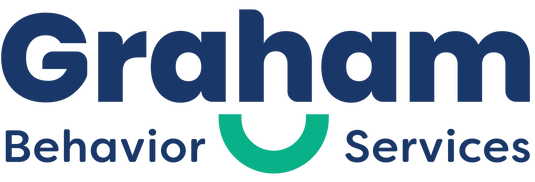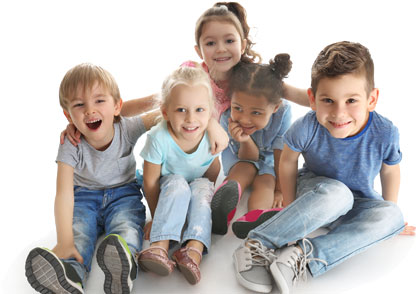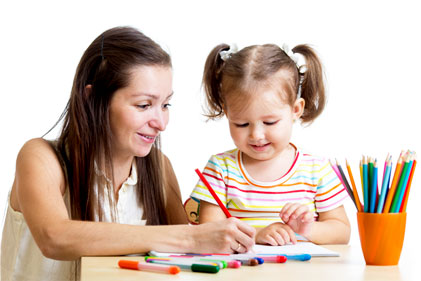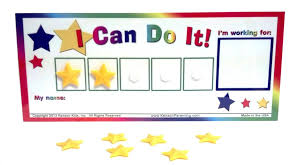Young adults with autism or developmental disabilities often have a very long history of reinforcement of their problem behavior. This often leads to a restrictive lifestyle for their families, which can negatively affect the family’s mental health and/or quality of life. The “why” is often very complex, and all of the reasons that they engage in problem behavior are not so easily identified. But, with the Practical Functional Analysis (PFA) process you can identify the situations that occasion the behavior and which consequences maintain the behavior. This is the first step in treating the problem behavior: identifying and understanding the situations where the behavior is occurring. The next steps involve teaching the individual the skills needed to replace problem behavior, called Skill-Based Treatment (SBT).
The PFA & SBT have proven to be effective in safely teaching individuals to communicate their wants and needs. This form of communication is intended to replace the problem behaviors that the individual may currently be using to get “their way”. While there’s currently a ton of discussion about this process and its outcomes for children, it’s important to note that it is also a successful training program for adolescents and adults with ASD or developmental disabilities! While the general protocol is the same, there are a number of considerations when choosing to implement skill-based treatment with a teenager or an adult.
Start at the End
Yes! We are asking you to begin this process by imagining the end goal. It can be as simple as “I want John to sit the whole time while getting a haircut”, or as complex as “John should be able to do all of his homework and chores without my help”, and anywhere in between! Think of the big picture. Having this picture in your mind of what you are all working towards will expedite the planning process and help with decision-making. The family should work closely with the BCBA to identify these goals. With these goals in mind, the BCBA will create the steps of SBT.
Young adults or adults with ASD or other developmental disabilities may have different end goals than younger learners. The goals should depend on the individual’s age, but it’s also important to consider their interests, strengths, weaknesses, cognitive ability, and developmental level.
Safety Spotlight
Another incredibly important component of working with older individuals who exhibit problem behavior is safety. We do not need to see severe problem behavior to know that it occurs. Instead, during the PFA, the precursor behavior is reinforced. For example, if John often yells “no!” before engaging in self-injury or aggression, the practitioner would return to reinforcement as soon as John yells “no!” – so as to prevent any escalation or emotional responses. A similar approach is taken during SBT.
During both PFA and SBT, implementers utilize the Enhanced Choice Model, which allows the learner the valuable choice of whether to participate or not. The learner is able to “opt in” to practice, by either entering a specific treatment environment or verbally agreeing to opt in. On the other hand, the learner is able to “opt out” of practice at any point by leaving the area or verbally asking to be finished with practice. This open-door policy not only helps to keep everything safe, but also gives the implementers some constructive feedback. If the learner is often opting out of practice, the implementers know that something needs to be done to change this.
Maintain Dignity
 Along with safety, the other 2 priorities of SBT are televisability and dignity. This is especially apparent when working with older individuals. Instructors should avoid standing nearby and directing the learner to do tasks, but rather try to be an active participant in the task as well. Not only does this look better from an outsider’s perspective, but it allows for a more dignified learning experience for that learner. For example, imagine that one of John’s goals is to work as a busboy at a nearby restaurant. One of his SBT branches may involve clearing dishes off a table, wiping the table, and rolling silverware. To maintain John’s dignity while he is working, the instructor could be modeling for him or imitating his behavior – not sitting nearby, waiting for him to finish.
Along with safety, the other 2 priorities of SBT are televisability and dignity. This is especially apparent when working with older individuals. Instructors should avoid standing nearby and directing the learner to do tasks, but rather try to be an active participant in the task as well. Not only does this look better from an outsider’s perspective, but it allows for a more dignified learning experience for that learner. For example, imagine that one of John’s goals is to work as a busboy at a nearby restaurant. One of his SBT branches may involve clearing dishes off a table, wiping the table, and rolling silverware. To maintain John’s dignity while he is working, the instructor could be modeling for him or imitating his behavior – not sitting nearby, waiting for him to finish.
Older learners often have a long history of problem behavior. It can be easy to lose hope after years and years of unsuccessful behavioral interventions. Do not give up! Skill-based treatment can reinstate hope and help decrease problem behavior by teaching the individual appropriate ways to tolerate the many disappointments that we all sometimes face in our lives. While the steps in the process remain the same across all learners, there are still plenty of opportunities for individualization based on their needs. When beginning SBT with older learners, it’s especially important to start with an end goal in mind and prioritize safety, dignity, and televisability.














